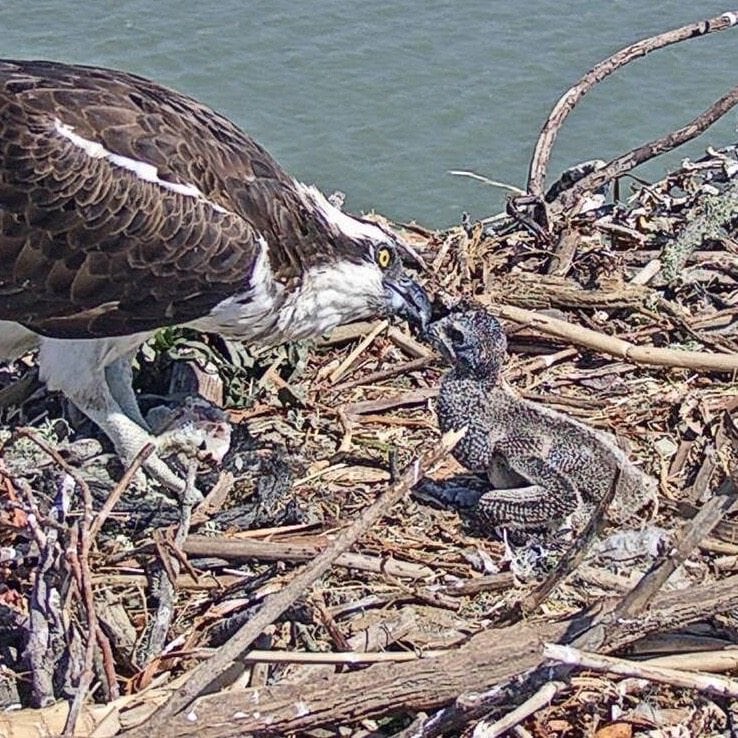Eco-Ed students discover wild San Francisco
By Sharon Beals
An energetic and slightly raucous hike up the trail through the canyon was just what the classroom of fourth graders from Bayshore Elementary in San Francisco’s Visitacion Valley neighborhood needed after their morning bus ride to Glen Park.
The air was fresh, newly green willows blazed, and Islais Creek was brimming. In no time Anthony DeCicco, Golden Gate Bird Alliance’s Eco-Education organizer, leader, and magician, was demonstrating to half of these explorers how to net the aquatic life in its pools. GGBA volunteers handed out binoculars to the others, patiently demystified the art of focusing, and then led them off on a stop-and-start wander around the canyon to look, listen, and identify who was singing, flitting, or soaring.
This stellar day was living embodiment of what they had been learning through GGBA’s school-based Eco-Ed program about the habitat and health of their local watershed, from the trickle of its headwaters through its journey to the ocean.
 Eco-Ed students collect aquatic life with nets / Photo by Sharon Beals
Eco-Ed students collect aquatic life with nets / Photo by Sharon Beals
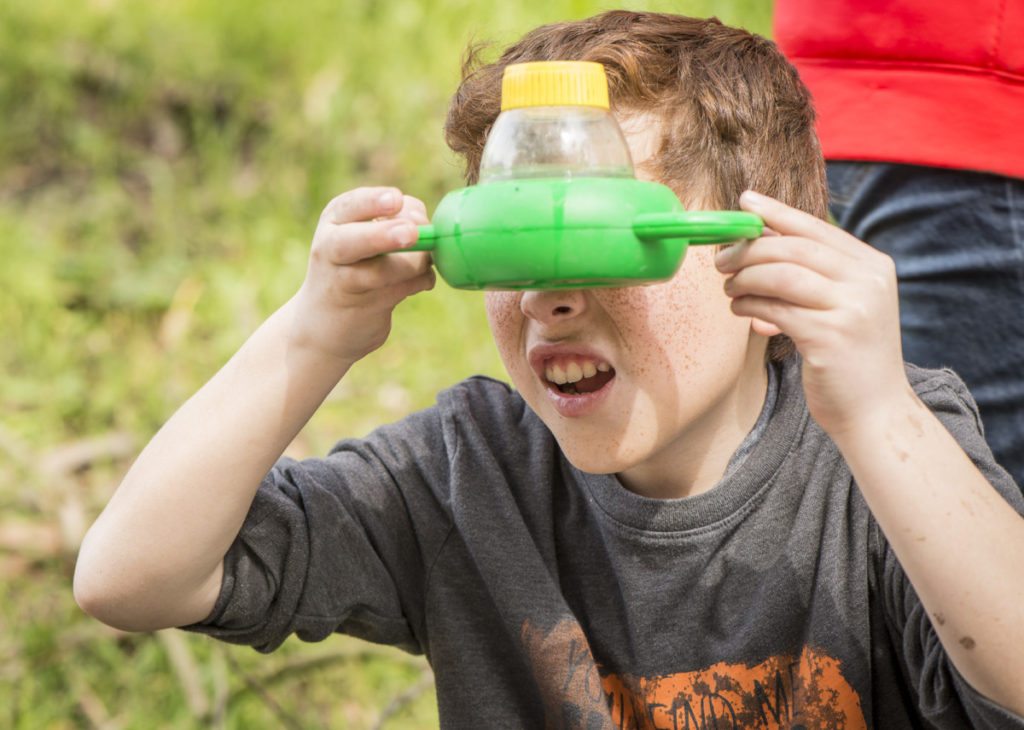 Examining the stream water they’ve collected / Photo by Sharon Beals
Examining the stream water they’ve collected / Photo by Sharon Beals
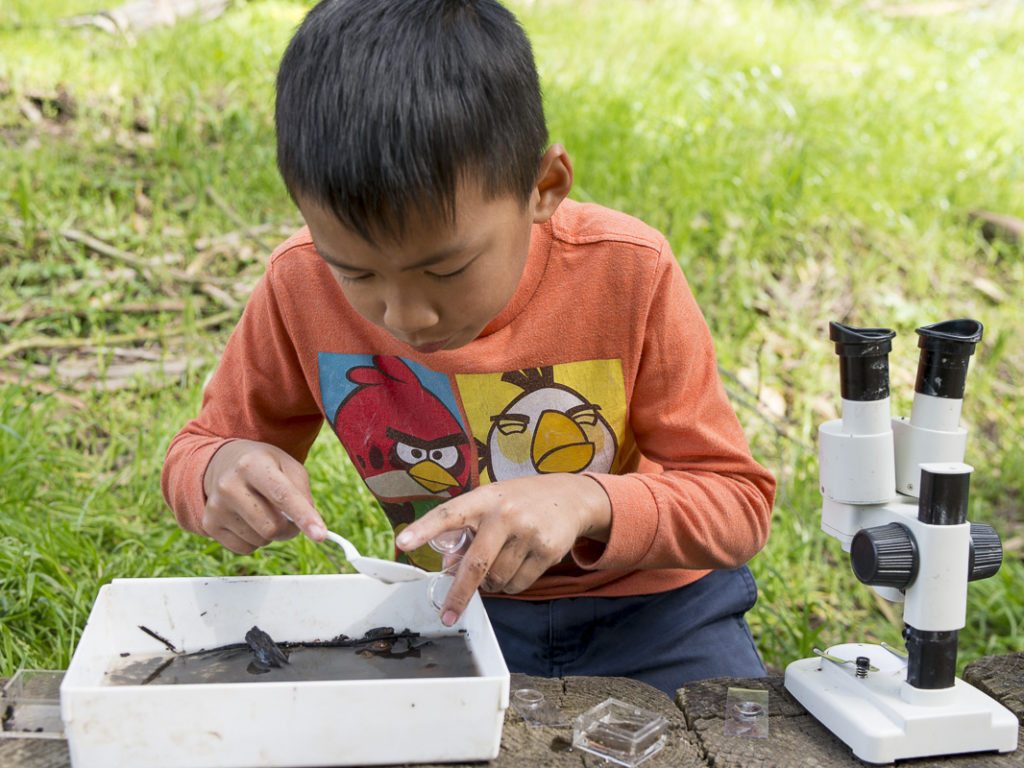 Another way to look at it / Photo by Sharon Beals
Another way to look at it / Photo by Sharon Beals
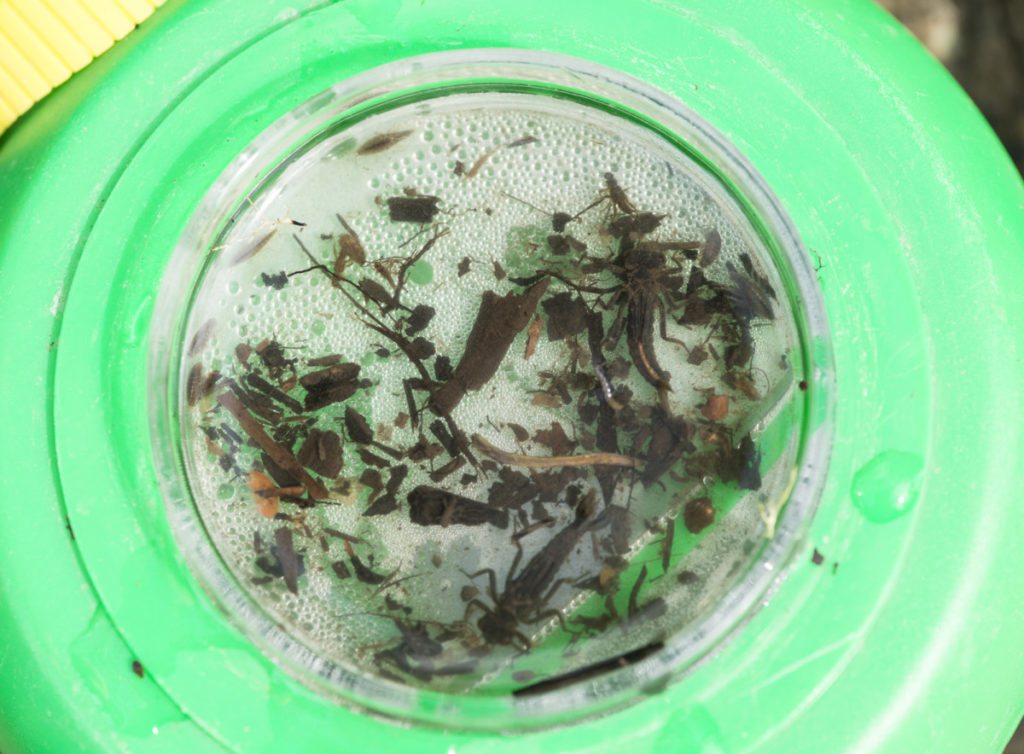 Look what’s in there! Photo by Sharon Beals
Look what’s in there! Photo by Sharon Beals
Each year, working with classroom teachers and dedicated GGBA volunteers, this program reaches over 650 third, fourth, and fifth graders in underserved public elementary schools in East Oakland, North Richmond/San Pablo and southeast San Francisco. In a curriculum that integrates STEM (science/technology/engineering/math) learning standards, students learn about and help restore local wildlife habitats. At the end of the school year, the children and their families are invited on a culminating field trip, usually to the ocean. (For their final trip, this particular class went to Alcatraz to view the nesting colonies of cormorants, gulls, egrets, and Pigeon Guillemots.)
 Bayshore Elementary students view seabird colonies on Alcatraz / Photo by Anthony DeCicco
Bayshore Elementary students view seabird colonies on Alcatraz / Photo by Anthony DeCicco
The curiosity and enthusiasm of the students for the life they observed under microscopes and through binoculars that day in March was contagious. For many of them, a day in the wilds of even an urban park was a rare experience.
The Eco-Education Program strives to improve the lives and learning of students from communities with limited access to environmental education, as well as few opportunities to spend time in nature. Within heavily industrialized communities stressed by limited resources and high crime rates, these trips offer children and family members opportunities to find a calming sanctuary within their nearby natural spaces.…


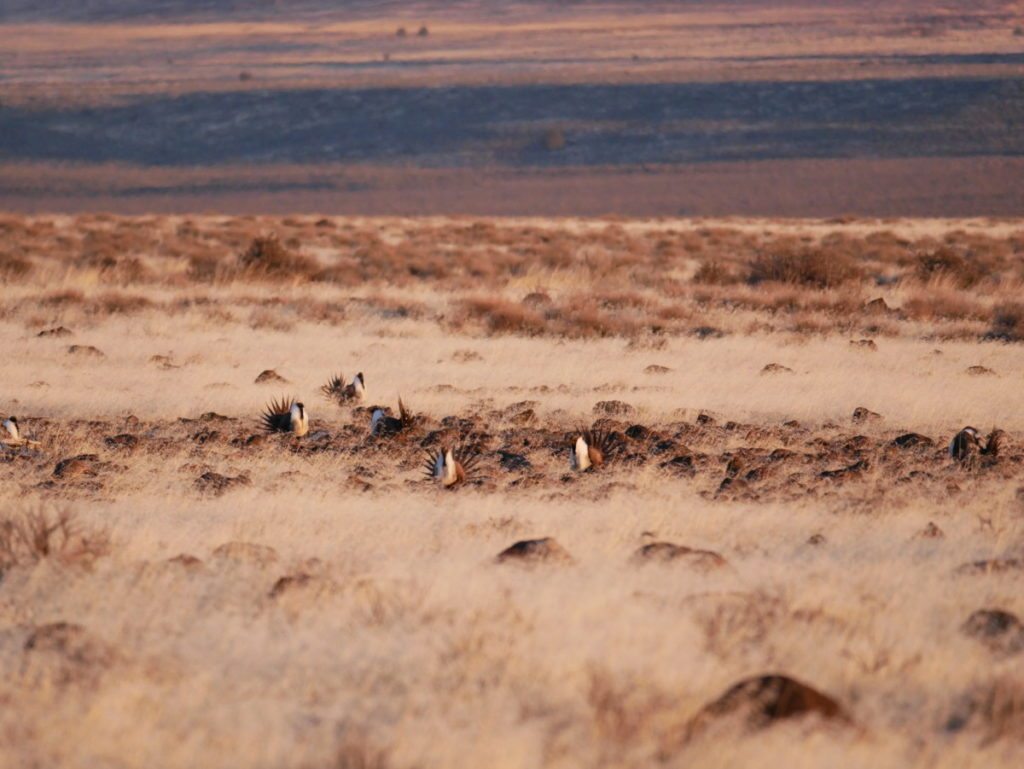 View of the distant lek by Chris Wills.
View of the distant lek by Chris Wills.
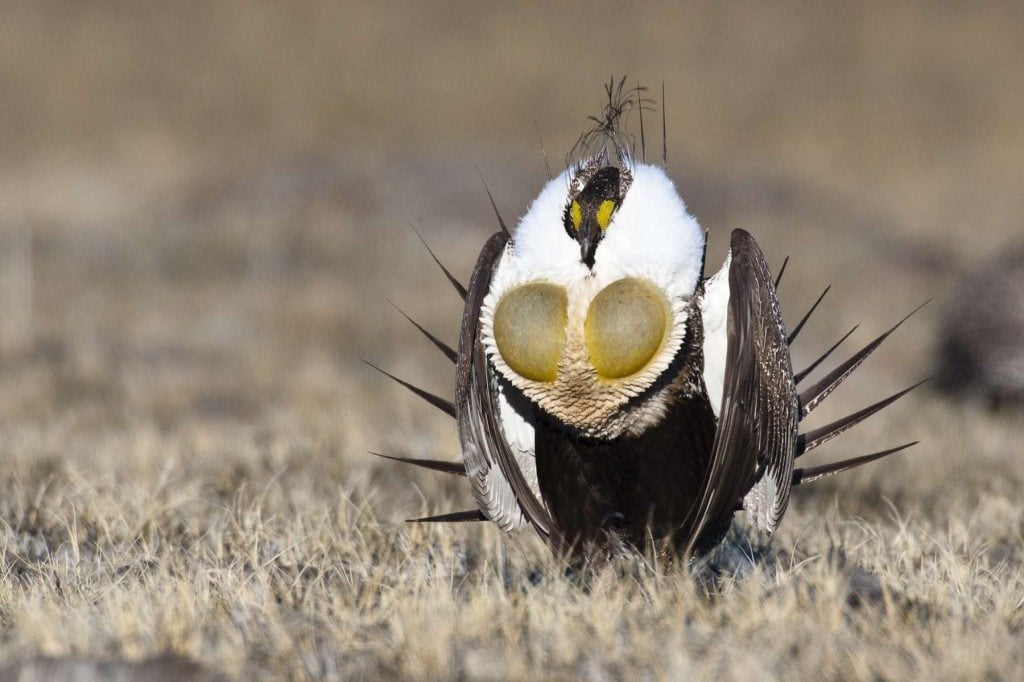 It took three days in a blind to get this picture of a male Greater Sage Grouse. / Photo by Bob Lewis, not from the recent GGBA trip.
It took three days in a blind to get this picture of a male Greater Sage Grouse. / Photo by Bob Lewis, not from the recent GGBA trip.
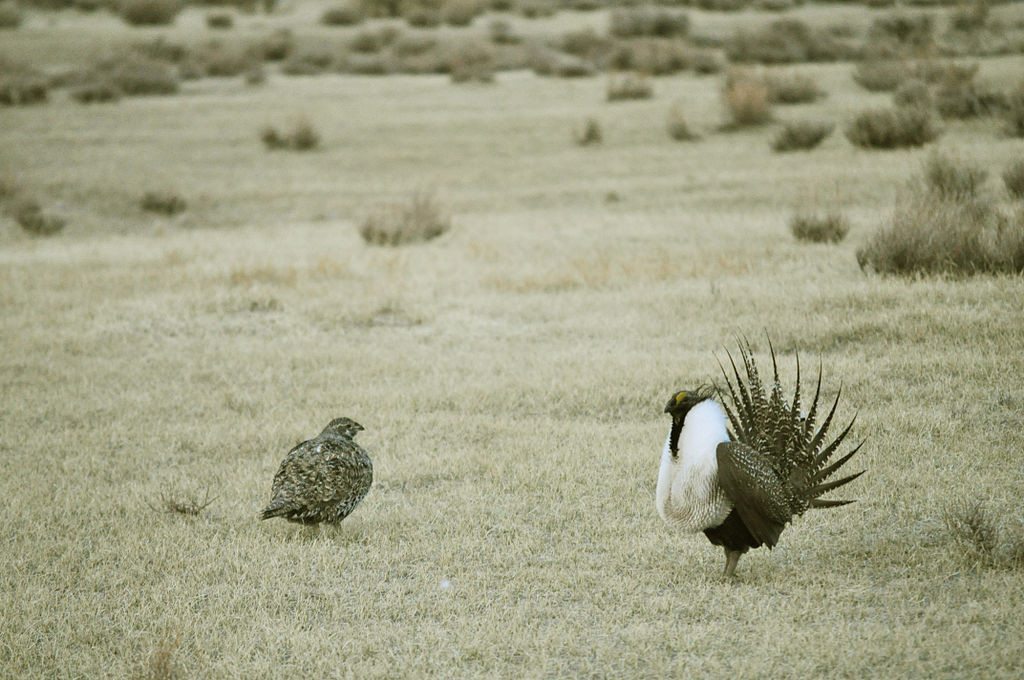 Male Greater Sage-Grouse performs his courtship display for a female / Photo by Jeanne Stafford (USFWS), not on the GGBA trip
Male Greater Sage-Grouse performs his courtship display for a female / Photo by Jeanne Stafford (USFWS), not on the GGBA trip
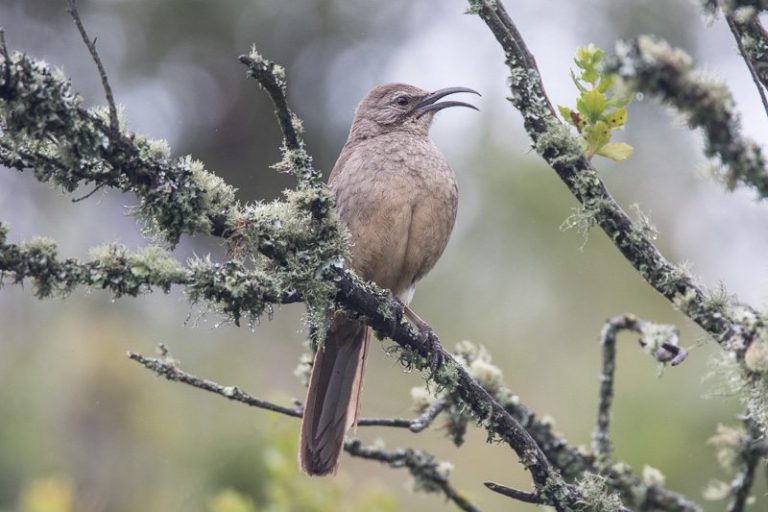
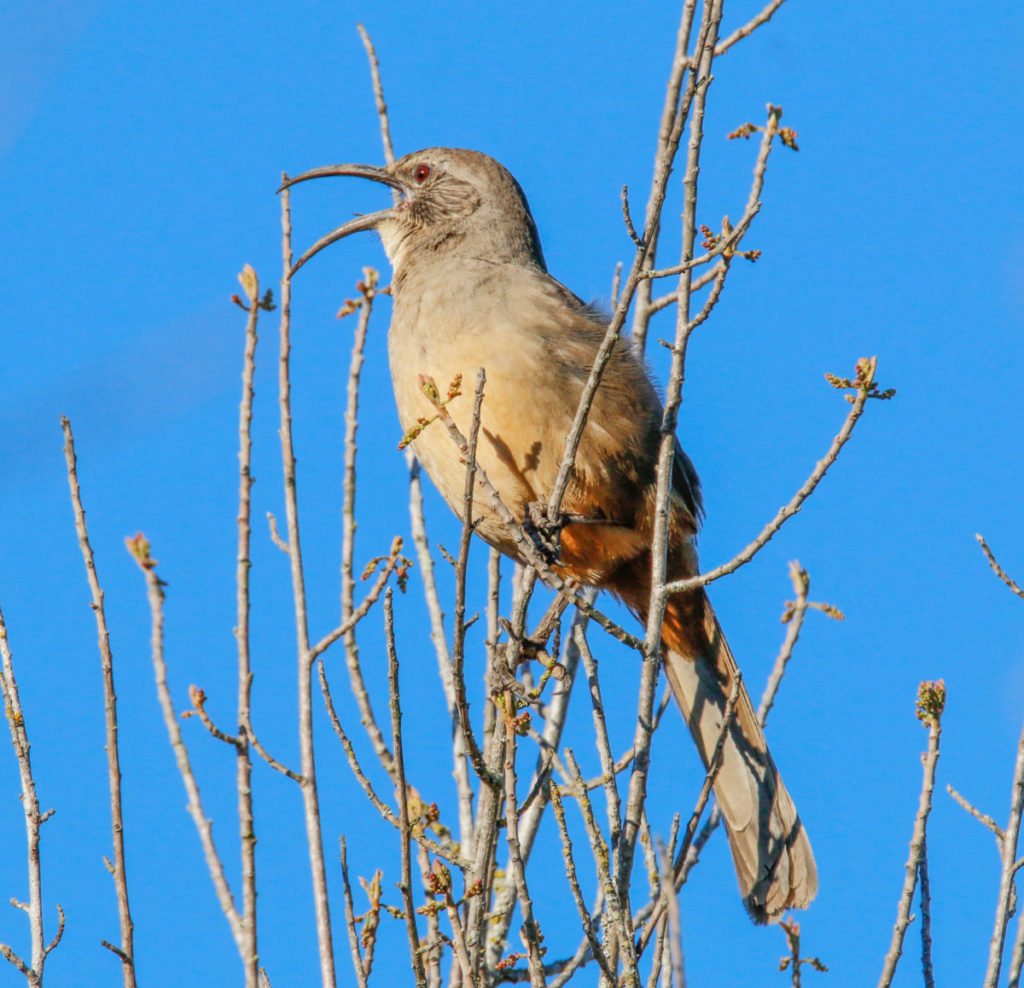 California Thrasher singing by Miya Lucas
California Thrasher singing by Miya Lucas
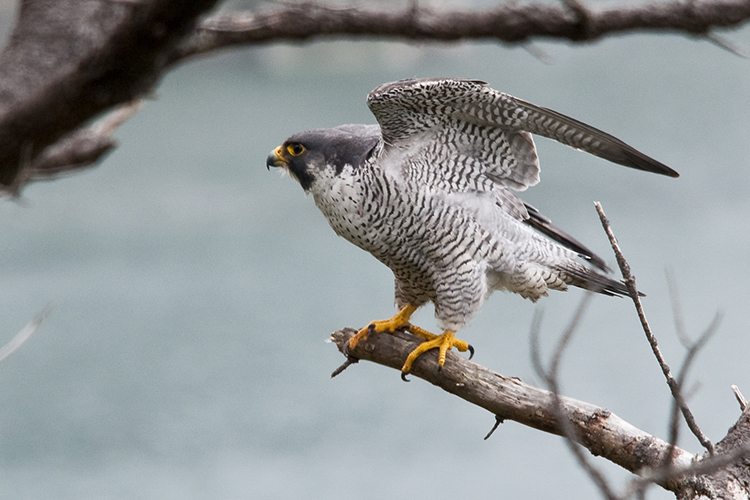
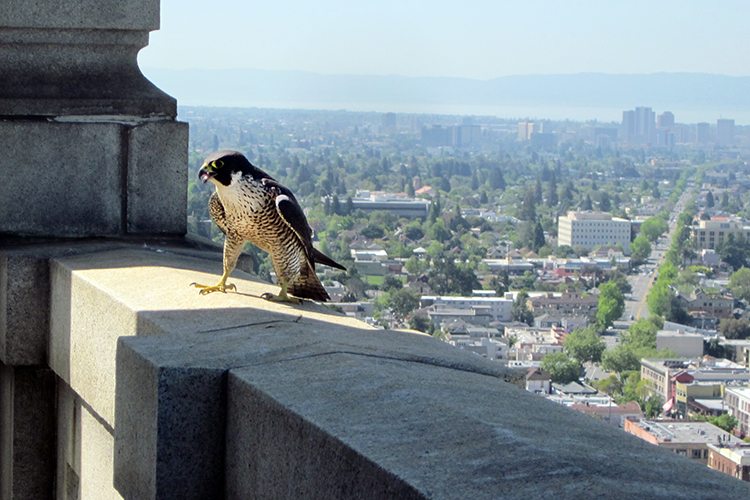 The female Peregrine Falcon on the second balcony ledge of the Campanile, close to her nest (Photo by Doug Bell)
The female Peregrine Falcon on the second balcony ledge of the Campanile, close to her nest (Photo by Doug Bell)
